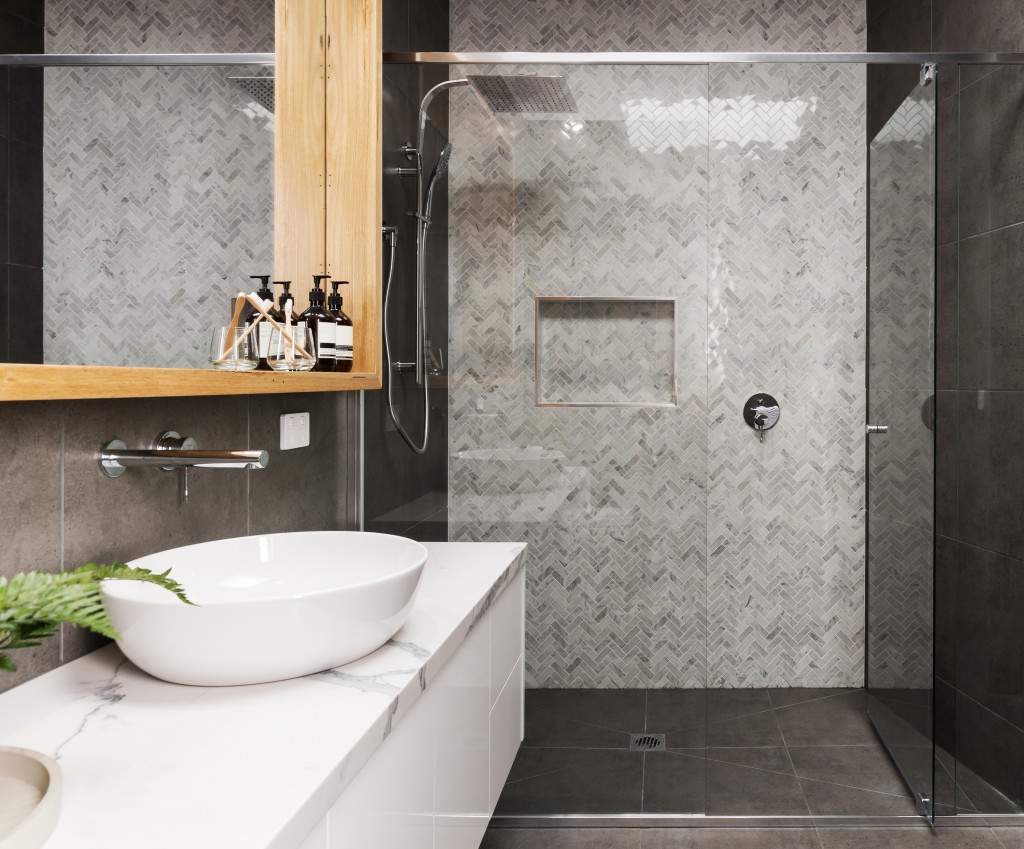Bathrooms are one of the selling points of a home. Many homeowners spend a lot of time and money upgrading their bathrooms. If not to raise their home’s value, it’s for maximum comfort. But what many homeowners don’t realize off the bat is that no matter how much effort and money is put into a bathroom, condensation will still happen, and it’s often underestimated.
Condensation is fairly normal, especially when it comes to closed-up humid spaces like the bathroom. But if measures are not installed to mitigate or control it, it’ll do more than creating watermarks on your bathroom cabinet. It can lead to black mold, which can be harmful to your health. Black mold can cause allergies, irritation, and infection. With this in mind, babies, children, the elderly, and people with allergies, asthma, or weak immunity are at greater risk.
What Causes Condensation in the Bathroom?
Condensation occurs when water vapor becomes liquid. What happens in the bathroom is that when the steam from your hot shower comes into contact with the cold walls, it becomes droplets of water. The moisture content in the air interacts with the cold surfaces in the room, like mirrors, windows, and tiles. Condensation in the bathroom is inevitable, especially when left unnoticed. Luckily, there are measures and bathroom additions that will control condensation, ultimately resulting in zero costs on repairs and health problems.
How to Prevent Moisture on Walls
When it comes to trapped warm and damp air, proper ventilation is the answer. However, it is essential to keep the bathroom door closed to prevent the moisture from escaping to the other parts of your home. Here are some ways to achieve proper ventilation and more.
1. Install an Exhaust Fan
To get the trapped humid air out, you should install an exhaust fan that will expel it. Leave it on for a few minutes after you’ve had a warm shower or bath. This will give it time to expel all the moisture in the air, preventing condensation from taking place on your bathroom surfaces. Once you return to turn it off, you’ll be surprised how dry everything has become.
2. Open Your Window
If you have a window in your bathroom, this will do good for ventilation. Utilize it to your advantage. Although everybody prefers to keep the cold out, try to leave your window open for a few minutes after your shower. Proper ventilation will enable the hot air to escape, regularizing the temperature of the bathroom.

3. Get a Dehumidifier
If your bathroom doesn’t have a window, or it’s still getting mold even after installing an exhaust fan, try getting a dehumidifier. A good dehumidifier will remove the moisture in your bathroom and collect it as water. If getting a dehumidifier is not within your budget, get a moisture-absorbing plant as an alternative. It may not work as well, but it should supplement other methods you have in place.
4. Wipe Down Surfaces
It might seem like extra work to wipe down your glass partition, walls, and mirrors after every shower or bath. But doing so will eliminate the possibility of mold in your bathroom. These surfaces don’t have to be completely dry, though. Just wipe enough that they won’t be wet anymore. Remember to use a dry towel when wiping these surfaces, or it’ll just defeat the purpose.
5. Have Cooler Showers From Time to Time
Taking shorter ones sounds good, too. Doing so will limit the amount of hot air, which ultimately reduces condensation. This might not be a long-term solution, but it’s supplementary to the other measures you instill to keep your bathroom mold-free. But if you keep a busy schedule and are always on the go, you’re already doing your bathroom a favor.
6. Repaint the Walls
Don’t paint the bathroom walls with just any paint. Use one that reduces condensation to add a layer of protection for the walls. Anti-condensation paint is warmer to the touch and can repel water, thus reducing the likelihood of mold growth. Besides, maybe the walls need a fresh paint job after all the condensation.
Conclusion
Condensation is a common problem in many households, especially in humid and closed rooms such as the bathroom. Even if it’s a problem many people face, the urgency to solve it shouldn’t be compromised. It affects not only the interior of the bathroom but also the health of a person once mold starts to grow. Take care of your investment and your health by addressing this problem as soon as possible.

